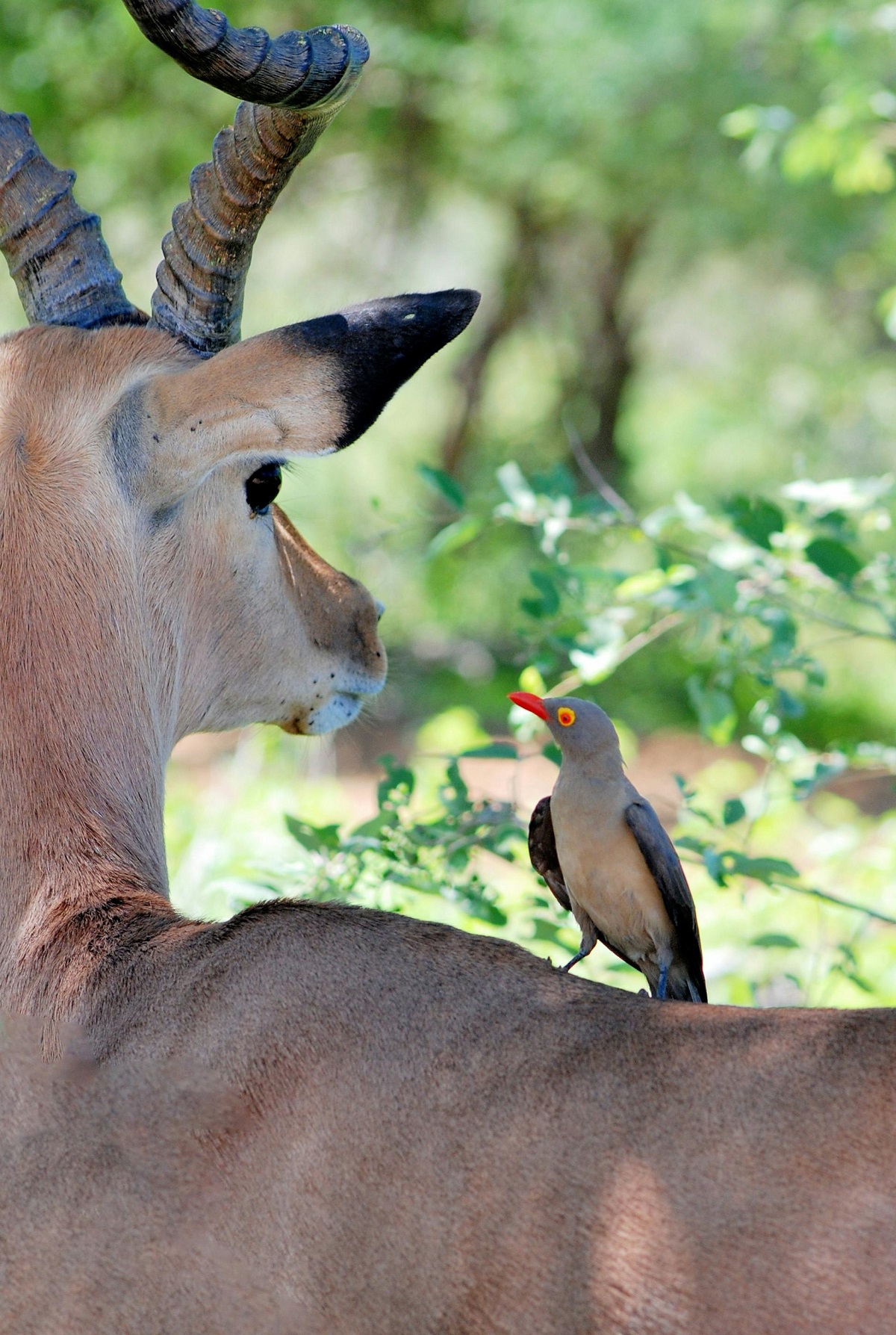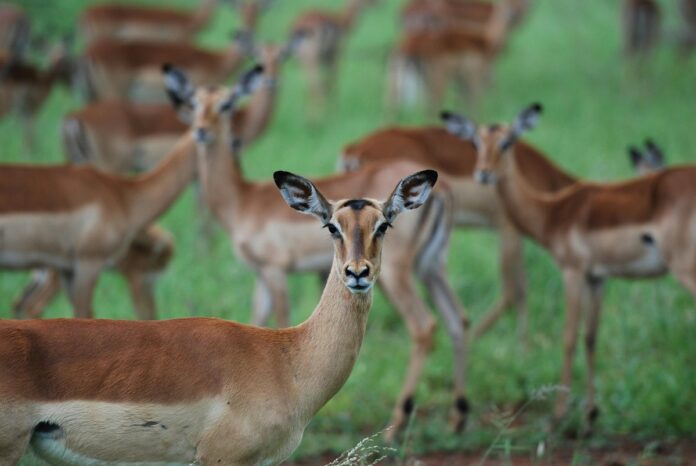Gazelles represent some of nature’s most exquisite creations, embodying both delicate beauty and remarkable athleticism. These slender, long-legged antelopes have captivated human imagination for centuries, appearing in ancient art, literature, and religious texts as symbols of purity, grace, and freedom. Found primarily across Africa and Asia’s vast grasslands, savannas, and deserts, gazelles have evolved into perfect examples of adaptation to open landscapes where speed and vigilance mean the difference between life and death.
Belonging to the genus Gazella within the Bovidae family, these medium-sized ungulates display a fascinating array of behaviors and physical traits that enable their survival in challenging environments. From their distinctive bounding leaps known as “stotting” to their complex social structures, gazelles intrigue wildlife biologists and nature enthusiasts alike. This comprehensive exploration will delve into every aspect of gazelle biology and ecology, revealing why these creatures remain among the most iconic and beloved inhabitants of Earth’s wild places.
Physical Characteristics: Anatomy of a Speedster

Gazelles possess a body perfectly honed by evolution for life in open terrain. Their lightweight yet muscular frame typically stands between 60 to 110 centimeters at the shoulder, with weights ranging from a delicate 15 kilograms in smaller species up to 70 kilograms for larger varieties. This streamlined physique allows for explosive acceleration and incredible endurance running, crucial for escaping the many predators that share their habitat.
The gazelle’s most striking features include
Coat Coloration: Most species exhibit a sandy or reddish-brown coat with white underparts, providing effective camouflage against predators. Some, like the Thomson’s gazelle, boast distinctive black stripes along their sides.
Facial Markings: Many species have characteristic facial patterns, including dark eye stripes that may reduce sun glare and help with visual communication.
Horns: Both sexes typically grow horns, though males’ are generally longer and more robust. These curved or ringed structures serve as both weapons in mating competitions and defensive tools against predators.
Sensory Adaptations: Large, dark eyes positioned laterally provide nearly 360-degree vision, while oversized ears can rotate independently to detect faint sounds.
Leg Structure: Exceptionally long, slender legs with elastic tendons function like springs, enabling those spectacular high-speed leaps and bounds.
Perhaps most remarkable is the gazelle’s running capability. When fleeing danger, these animals can reach breathtaking speeds up to 97 kilometers per hour (60 mph) in short bursts, with the ability to maintain 48 km/h (30 mph) for extended periods. Their signature stotting behavior—high, stiff-legged jumps—may serve multiple purposes: demonstrating fitness to predators, providing better visibility over tall grass, or signaling alarm to herd members.
Habitat and Distribution
Gazelles inhabit some of Earth’s most iconic landscapes, from the golden savannas of East Africa to the harsh deserts of the Arabian Peninsula. Their distribution reflects an evolutionary success story, with different species adapting to remarkably diverse environments across two continents.
African Gazelle Species
Africa remains the stronghold of gazelle diversity, hosting numerous species each finely tuned to specific ecological niches:
Thomson’s Gazelle (Eudorcas thomsonii)
Range: Kenya and Tanzania’s Serengeti ecosystem
Habitat: Short-grass plains with scattered bushes
Distinctive Traits: Small size (50-70 cm tall), black side stripe, constant tail flicking
Grant’s Gazelle (Nanger granti)
Range: Eastern Africa from Sudan to Tanzania
Habitat: Dry grasslands and open woodlands
Distinctive Traits: Larger build, white rump patch, lyre-shaped horns
Dama Gazelle (Nanger dama)
Range: Scattered Sahara Desert regions
Habitat: Semi-desert and desert grasslands
Distinctive Traits: Extremely long legs, reddish-brown and white coat
Asian Gazelle Species
Asia hosts several equally fascinating gazelle species adapted to more arid conditions:
Goitered Gazelle (Gazella subgutturosa)
Range: Middle East to Central Asia
Habitat: Deserts, semi-deserts, and mountain foothills
Distinctive Traits: Male throat swelling during rut, sandy coat
Chinkara (Gazella bennettii)
Range: India, Pakistan, Iran
Habitat: Dry plains, deserts, and light forests
Distinctive Traits: Compact size, faint facial markings, solitary tendencies
Arabian Sand Gazelle (Gazella marica)
Range: Arabian Peninsula
Habitat: Extreme desert environments
Distinctive Traits: Pale coloration, water conservation adaptations
Gazelles demonstrate remarkable habitat flexibility, with some species like the dorcas gazelle surviving in near-waterless deserts by extracting moisture from plants, while others like the mountain gazelle thrive in rocky, elevated terrain. This adaptability, however, faces increasing challenges from human encroachment and climate change.
Social Structure and Behavior
Gazelles exhibit complex social behaviors that vary by species, sex, and season. Their social organization represents an elegant balance between predator avoidance, resource acquisition, and reproductive success.
Herd Composition and Dynamics
Most gazelle species follow a fluid social system where group size and composition change frequently:
Nursery Herds: Females with young form stable groups of 10-30 individuals, providing safety in numbers and shared vigilance against predators.
Bachelor Groups: Non-territorial males congregate in loose associations, often practicing sparring matches that prepare them for future breeding competitions.
Territorial Males: During mating seasons, dominant males establish and fiercely defend territories containing prime grazing areas, marking boundaries with dung piles and scent glands.
Seasonal migrations dramatically influence social structures for some populations. The Thomson’s gazelle, for instance, participates in the Great Migration across the Serengeti-Mara ecosystem, forming massive mixed herds with zebras and wildebeests that number in the hundreds of thousands.
Communication Methods
Gazelles employ sophisticated communication systems to maintain herd cohesion and warn of danger:
Visual Signals: Tail flicking, ear positioning, and the characteristic stotting jumps convey specific messages about predator threats or social status.
Vocalizations: While generally quiet, gazelles produce snorts, bleats, and grunts during distress or mother-young interactions.
Olfactory Cues: Scent marking through preorbital glands (near the eyes) and hoof glands plays a crucial role in territorial marking and individual recognition.
Recent studies suggest gazelles may also communicate through subtle body language and positioning, with herd members often moving in coordinated patterns that appear almost choreographed when evading predators.
Feeding Ecology: The Vegetarian Lifestyle
As dedicated herbivores, gazelles have evolved specialized feeding strategies to extract maximum nutrition from often sparse vegetation. Their dietary preferences vary significantly between species and seasons, reflecting adaptations to local environments.
Dietary Composition
Gazelles primarily consume:
Grasses: The staple for most species during wet seasons when tender shoots are abundant
Browse: Leaves, shoots, and twigs from shrubs and trees become important during dry periods
Forbs: Herbaceous flowering plants provide supplemental nutrition
Fruits and Pods: Seasonal treats that offer concentrated energy
Desert-adapted species like the Arabian sand gazelle exhibit remarkable dietary flexibility, consuming salt-tolerant plants and even digging for roots and bulbs when surface vegetation disappears. All gazelles practice coprophagy (re-ingesting special fecal pellets) to maximize nutrient absorption from their fibrous diet.
Feeding Adaptations
Several anatomical and physiological adaptations enable efficient feeding:
Dental Structure: Broad molars with high crowns grind tough vegetation, while a lack of upper incisors allows close cropping of plants.
Rumen Microbiology: Specialized gut bacteria break down cellulose, extracting maximum energy from plant matter.
Water Conservation: Many species produce highly concentrated urine and dry feces to minimize water loss.
Selective Feeding: Gazelles carefully choose the most nutritious plant parts, often following rain patterns to find fresh growth.
Their feeding activities significantly impact ecosystems. By preventing grassland domination by any single plant species and dispersing seeds through their droppings, gazelles help maintain habitat diversity that benefits countless other organisms.
Predator-Prey Relationships: The Eternal Chase
Gazelles occupy a crucial middle position in food webs, serving as primary converters of plant material into energy that sustains Africa’s and Asia’s magnificent predator populations. This role has shaped their evolution, producing some of nature’s most spectacular predator avoidance strategies.
Major Gazelle Predators
The list of animals that prey on gazelles reads like a who’s who of formidable hunters:
Big Cats
Cheetahs: Specialized gazelle hunters relying on blinding acceleration
Lions: Use teamwork to isolate individuals from herds
Leopards: Ambush hunters targeting gazelles at waterholes
Canids
African wild dogs: Pursue prey relentlessly in coordinated packs
Jackals: Often target young or weakened individuals
Hyenas: Both spotted and striped varieties take gazelles through persistence hunting
Birds of Prey: Large eagles sometimes snatch newborn fawns
Humans: Historically one of the most significant gazelle predators through hunting
Anti-Predator Adaptations
Gazelles employ a multi-layered defense system:
Early Detection
Elevated resting positions on knolls provide visibility
Rotating sentinel duty within herds
Acute hearing detects subtle predator movements
Escape Tactics
Explosive acceleration to maximum speed in seconds
Zigzag running patterns to confuse pursuers
Split-herd maneuvers where groups scatter in different directions
Group Defense
Mobbing behavior against smaller predators
Protective circles around vulnerable young
Communal alarm systems through visual and vocal signals
The evolutionary arms race between gazelles and their predators has produced some of nature’s most breathtaking spectacles—nowhere more evident than in East Africa’s savannas where cheetahs and Thomson’s gazelles engage in life-or-death chases reaching 100 km/h.
Reproduction and Life Cycle
Gazelle reproductive strategies reflect careful balancing of energy investment against survival odds in predator-rich environments. Their life histories demonstrate classic r/K selection traits—producing enough offspring to sustain populations despite high juvenile mortality.
Mating Systems and Courtship
Most gazelle species practice polygyny, where dominant males control access to multiple females:
Territorial Defense
Males establish breeding territories through displays and combat
Fierce horn-clashing battles determine dominance
Scent marking defines territory boundaries
Courtship Rituals
Males perform elaborate displays, including low-stretch approaches
Flehmen response tests female reproductive status
Persistent following and nudging of potential mates
Mate Selection
Females ultimately choose mates, often preferring central-territory males
Older, experienced males typically have highest success rates
Some species exhibit sneak mating by subordinate males
Gestation and Birth
After successful mating:
Gestation Period: Ranges from 5-7 months depending on species
Birth Timing: Often synchronized with rainy seasons when food is abundant
Birthing Strategy: Females isolate themselves, choosing concealed spots in tall grass
Neonatal Development: Newborns can stand within 15-30 minutes, nurse within an hour
This precocial development—where young are mobile shortly after birth—proves essential in predator-rich environments. Fawns instinctively remain motionless and scentless for their first weeks, with mothers returning periodically to nurse while maintaining distance to avoid attracting attention.
Growth and Development
Gazelle maturation follows distinct phases:
Hiding Phase (0-6 weeks)
Fawns remain concealed, visited only for brief nursing
Rapid weight gain from protein-rich milk
Gradual introduction to solid foods
Following Phase (6 weeks-4 months)
Join nursery herds but stay close to mothers
Begin developing social bonds with peers
Practice running and stotting maneuvers
Juvenile Stage (4-12 months)
Fully weaned but still learning foraging skills
Males begin playful sparring
Females may stay with maternal herd
Sexual Maturity
Females: 6-18 months depending on species
Males: 12-24 months (though may not breed until older)
This developmental trajectory produces adults well-prepared for survival challenges, though mortality remains high—only about 25% of fawns typically reach adulthood due to predation, disease, and environmental factors.
Preserving Nature’s Graceful Wonders
Gazelles embody the delicate balance of life in Earth’s open landscapes. Their existence intertwines with countless other species—from the grasses they consume to the predators they sustain. As climate change and human expansion reshape their habitats, gazelles face unprecedented challenges that test their remarkable adaptability.
Yet, their story remains one of hope. Through protected areas, community engagement, and scientific research, we can ensure these iconic animals continue bounding across savannas for generations to come. Each gazelle herd represents not just a biological population, but a living connection to our planet’s wild heart—a reminder of nature’s resilience when given space and protection.

